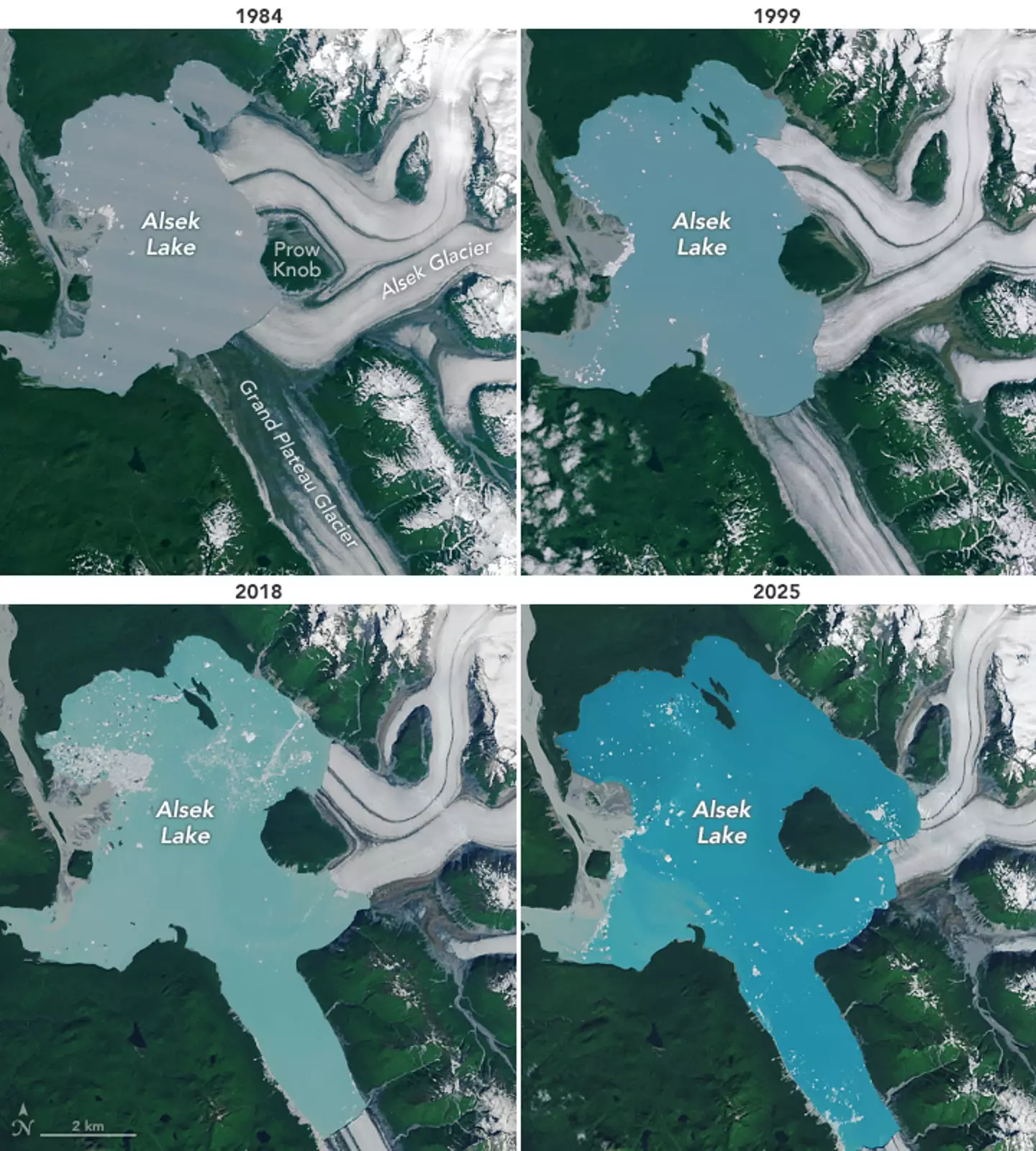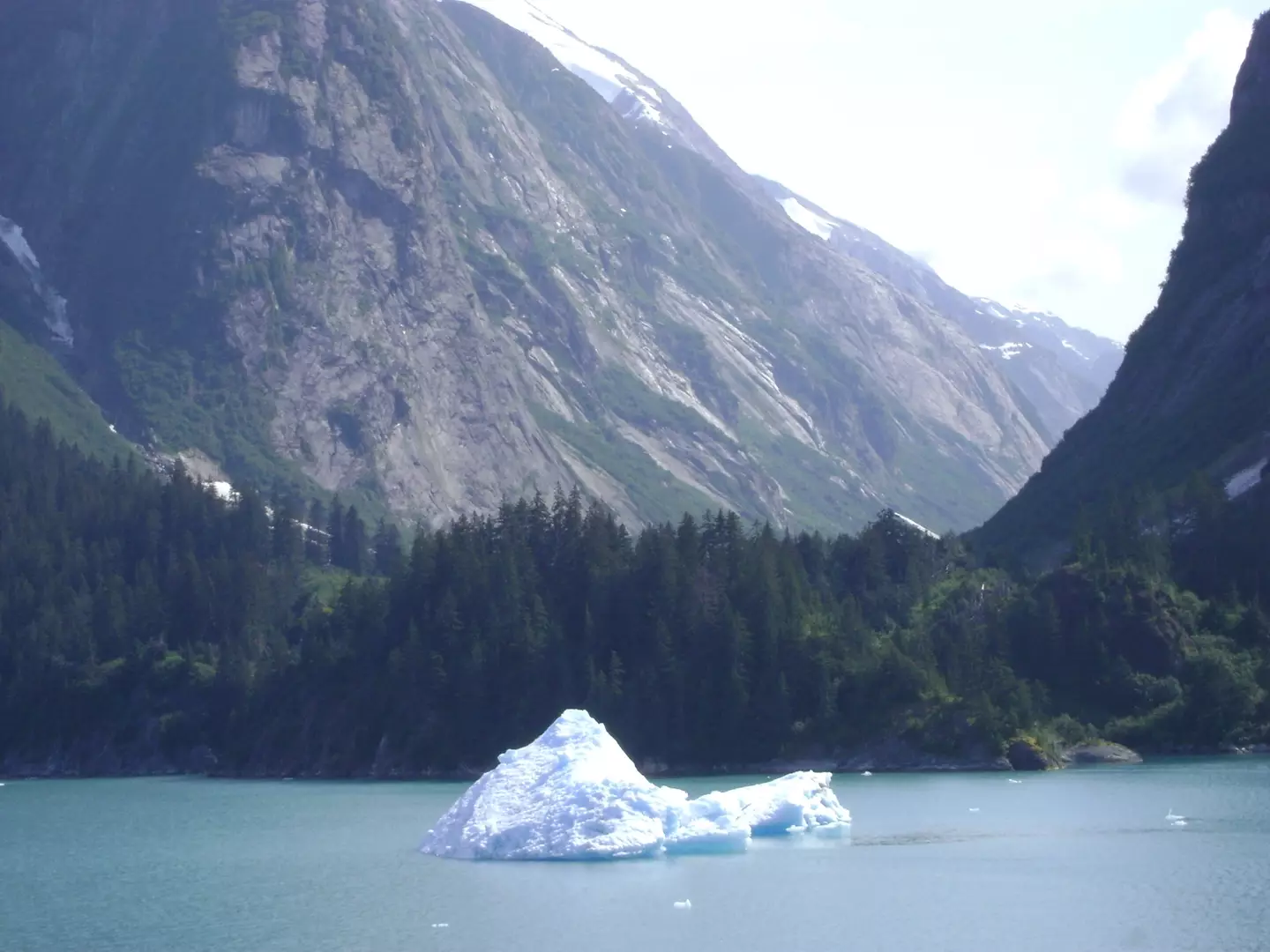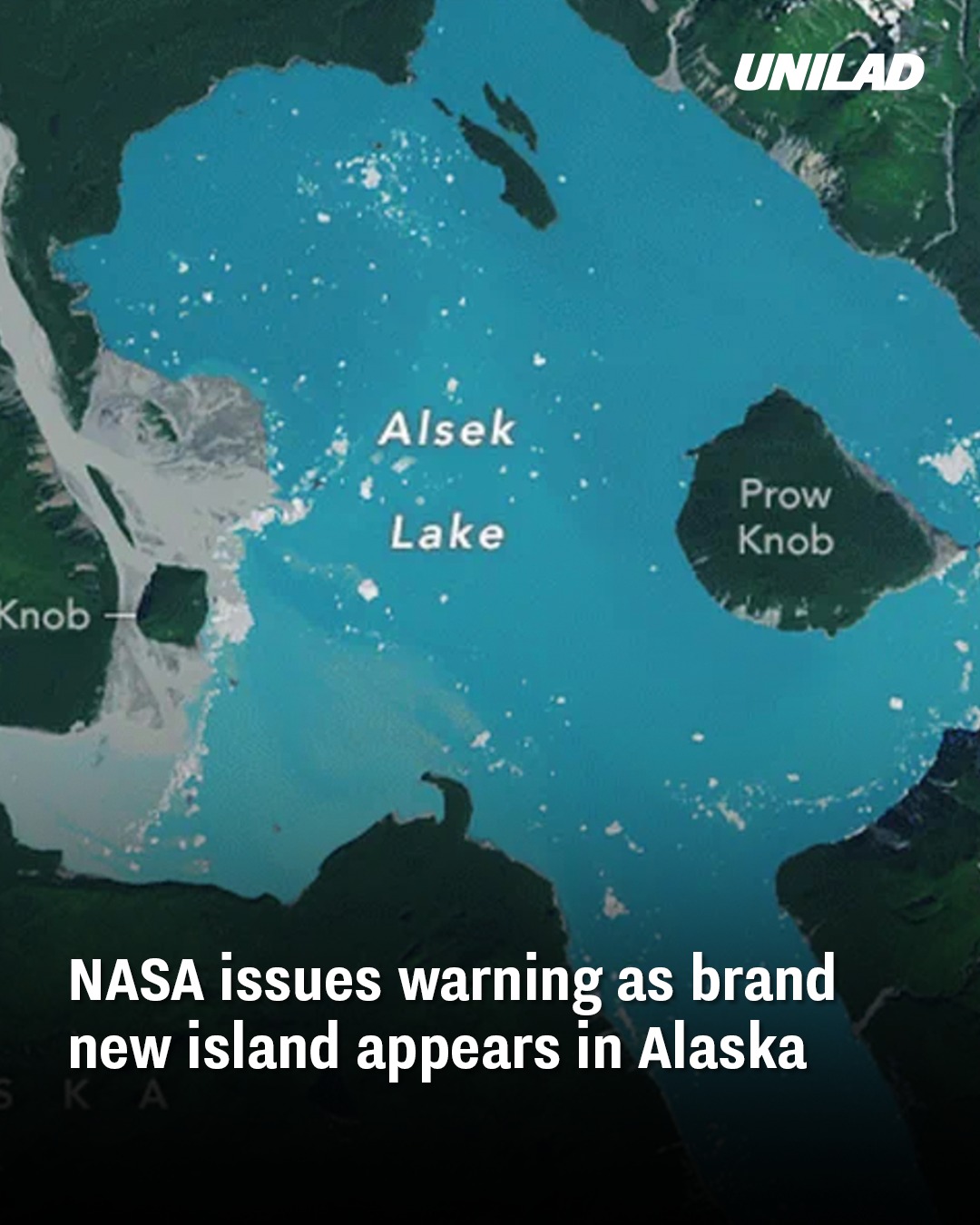Prow Knob Becomes an Island
NASA has issued a warning about the ongoing impacts of climate change following the emergence of a brand-new island in southeastern Alaska. Over the past four decades, satellite imagery has documented the melting of glaciers surrounding Prow Knob, a small mountain that was once enveloped by the Alsek Glacier.
As of summer 2025, meltwater has formed Alsek Lake around Prow Knob, officially isolating it as a solitary island. The island measures roughly two square miles.

The lake over time from 1984 to 2025 (NASA)
Four Decades of Change
NASA’s Landsat 5 satellite first captured Prow Knob in July 1984, when the mountain’s western edge touched the lakeshore while the rest remained surrounded by glacier ice. Since then, the Alsek Glacier and southern Grand Plateau Glacier have steadily retreated, allowing the lake to expand and gradually consume the remaining ice around the mountain.
NASA estimates the final separation of ice from Prow Knob occurred between July 13 and August 6, 2025.
The glacier that once ended at Gateway Knob, three miles west of Prow Knob, has melted significantly over the past century, with Alsek Lake nearly doubling in size, from 45 square kilometers to 75 square kilometers.

NASA warns even more could melt away now it is even less stable (Getty Images)
A Sign of Climate Change
The transformation of Prow Knob into an island is another visible example of the effects of rising global temperatures. NASA warns that now that the glacier has lost contact with the mountain, the surrounding ice is less stable and more prone to calving, which could accelerate further melting in the coming years.
Late glaciologist Austin Post named Prow Knob for its resemblance to a ship’s prow when it was partially surrounded by ice. Today, it stands completely detached, highlighting the dramatic changes reshaping Alaska’s coastal landscapes.
Implications
This newly formed island underscores the long-term impacts of climate change on glaciers, lakes, and coastlines, serving as a stark reminder of how rising temperatures are altering the natural world. NASA’s ongoing monitoring will continue to track these changes as Alsek Lake and other glacial regions evolve.


